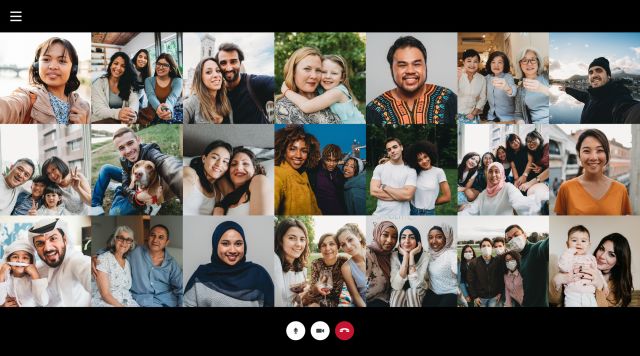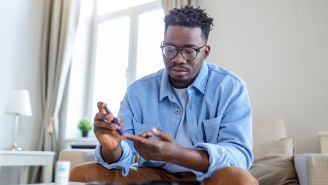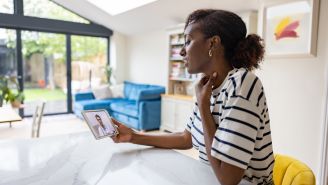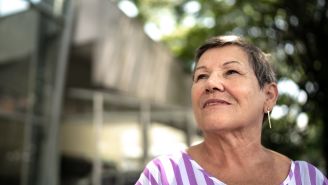Updated on April 2, 2020.
The COVID-19 pandemic is breeding fear, stress and uncertainty among people around the world. Unfortunately, the global health crisis is spreading another kind of contagion as well: stigmatization.
In many parts of the world, those who have the virus—or are thought to have been exposed to it—are facing discrimination, rejection and worse. The first cases of COVID-19 were discovered in Wuhan, China and now people of Chinese or Asian descent around the world are the targets of racist slurs and even physical attacks.
In the United States, residents of New York, New Jersey, California and other areas with high numbers of confirmed cases who have traveled to second homes or chosen to stay with relatives in other states are facing backlash in those communities. The idea that people from U.S. “hotspots” could spread the disease and usurp valuable medical resources in other cities has made many people wary about interstate travel.
The spread of bias and stigma is a disheartening trend that has touched not only local communities but also rattled global health experts.
Tedros Adhanom Ghebreyesus, PhD, director-general of the World Health Organization (WHO), voiced his concern during a March 2 press briefing. “It’s so painful to see the level of stigma we’re observing,” he said, “And stigma, to be honest, is more dangerous than the virus itself. A stigma is the most dangerous enemy.”
Changing hearts and minds is another important battle in the war against COVID-19.
Why the pandemic has provoked stigma
Stigma and xenophobia are common when new infectious diseases, such as COVID-19, rear their head, says Ron Barrett, PhD, a cultural and medical anthropologist at Macalester College in Saint Paul, Minnesota, whose research includes the social aspects of infectious diseases.
As the pandemic causes disruption in everyday life and anxiety, it leads to stigma for several reasons.
It’s never been seen before. The fear of the unknown is powerful. The story of this pandemic and the respiratory virus itself is still being written. COVID-19 was first identified in December 2019 so the risks and effects of the disease are still under investigation.
For example, it’s established that people aged 65 and older and those of any age with a weakened immune system or underlying health condition—including asthma or other lung disease, diabetes and heart disease—are most at risk of serious or fatal complications. But scientists are still learning about the infection and ongoing research shows that even younger adults between 20 and 54 can develop a serious infection and require hospitalization, according to the Centers for Disease Control and Prevention (CDC).
People feel like there’s no control. “There’s no vaccine yet and testing is inadequate at present, so we don’t know who has it and who doesn’t,” Barrett says.
Feeling relatively powerless in the face of many unknowns causes a great deal of anxiety, which can lead to bias and stigma. One of the ways people try to find control is to turn fear into anger and blame. If you believe the disease only happens to “those people,” you feel less vulnerable, Barrett explains.
But unlike people, the virus doesn’t discriminate. It doesn’t care whether you’re Asian, American, Australian, rich or poor. Celebrities, professional athletes, members of Congress and even royalty are testing positive. Prince Charles, the heir to the British throne, announced he has the novel coronavirus.
Stigma’s harmful effects
Aside from intolerance, exclusion and discrimination, stigma can have direct effects on a person’s psychological health, causing stress and in some profound cases, even self-loathing, Barrett says.
It can also worsen the spread of disease in the following ways:
- People may try to hide signs and symptoms and avoid medical care for fear of being “outed.”
- The stigmatization of health care workers who treat infected people may make some shy away from doing this crucial work.
- People with the virus may not cooperate with authorities. For instance, public health officials use “contact tracing” to help break the transmission from person to person. They ask an infected person for a list of their recent close contacts so those people can be tested and/or possibly isolated. If there is stigma associated with the disease, those infected are less likely to share their contacts in an effort to protect those people. “We’ve seen this time and again,” Barrett says.
How to stop bias and stigma
Putting the brakes on stigma makes communities more cohesive and resilient. Here’s how you can do your part.
Call the virus by its real name. The official name for the novel coronavirus is Coronavirus Disease 2019 or COVID-19. The official name was chosen specifically to fight stigma. “CO” stands for corona, “VI” for virus, “D” for disease. The 19 marks the year it was discovered: 2019. Do not call it the Chinese Virus, Wuhan Virus, Kung Flu or any other name that attaches a location or ethnicity to the virus. Even though the virus originated in China and there have been questions about how the Chinese government handled the early outbreak, those names unfairly cause more stigma and fuel racism.
Fight fear with facts. Avoid words like catastrophe, apocalypse or plague. Don’t repeat or share rumors about COVID-19 on social media. Go to reputable sources like Sharecare’s continuously updated COVID-19 hub, the CDC or the WHO for accurate information about the pandemic.
Avoid victimization. Refer to those with the virus as “people with COVID-19,” not victims. Don’t say someone “spread the virus” or “infected” others; that implies they wanted to get others sick and assigns blame.
Reach out. If you know someone who has COVID-19, show some empathy. If they feel well enough, make a phone call or set up a video chat. Offer to bring over a meal to a family or person in quarantine and leave it at the front door. Keep in mind, those in quarantine are protecting the whole community.
Appreciate those on the front lines. Health care providers put themselves in harm’s way to treat people and save lives. A nationwide shortage of protective gear, including face masks, shields, gowns and goggles, puts them at even greater risk of getting the virus themselves. Thank them for their unwavering dedication to the health and well-being of others.
We’re all in this together
Barrett stresses that if you get the virus, you should know you aren’t alone. “You are among the majority of human beings who can get this disease—in fact, all of us can.”
“We have a common enemy on this planet,” Tedros added in the March briefing. “We have to stand together in unison to fight it.”






